A year of North East orchids
From beautiful Bee Orchids to late-blooming Broad-leaved Helleborines, explore some of the North East orchids you could encounter on walks far and wide this year as part of Discovering Orchids.

Early Purple Orchid
Often emerging alongside Bluebells and Wood Anemones, the deep-purple flowers of this orchid make a wonderful sight come spring.
As its name suggests, this is one of the first orchid species to bloom each year and can be encountered in a range of habitats on non-acidic soils. In the North East, Early Purple Orchids are best looked for in ancient woodland.

Lady's-slipper Orchid
A distinctive and incredibly rare orchid, the Lady’s Slipper is found at only a handful of highly protected sites in the North East.
Preferring areas rich in limestone, its striking flowers consist of three beetroot coloured sepals atop a yellow ‘slipper’ suspended in the centre.
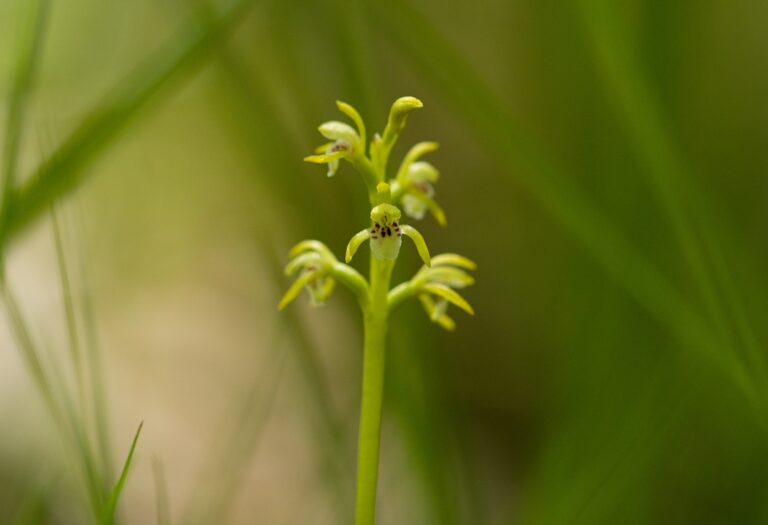
Coralroot Orchid
Small and unassuming, the yellow flowers of this leafless perennial are difficult to spot. Dependant on fungi to survive, in the North East, is mainly found growing in association with Birch in woodland and dune slacks.
Only a few colonies of this rare species are known from our region, with NHSN’s Gosforth Nature Reserve a known hotspot.

Common Spotted Orchid
The most common of all UK orchids, with its green leaves adorned with many purple spots, the Common Spotted Orchid can be encountered right across the North East in a wide range of habitats.
The flowers range from white and pale pink and purple but have distinctive pink spots and stripes on their lips.

Early Marsh Orchid
A highly variable orchid adorning wet grassland in May, the hooded, green leaves of the Early Marsh Orchid lack the spotting of Common Spotted Orchid. It ranges in colour from white to red; though is most often pink.
Found predominately on base-rich damp meadows, in the North East this species in widespread but seldom abundant.
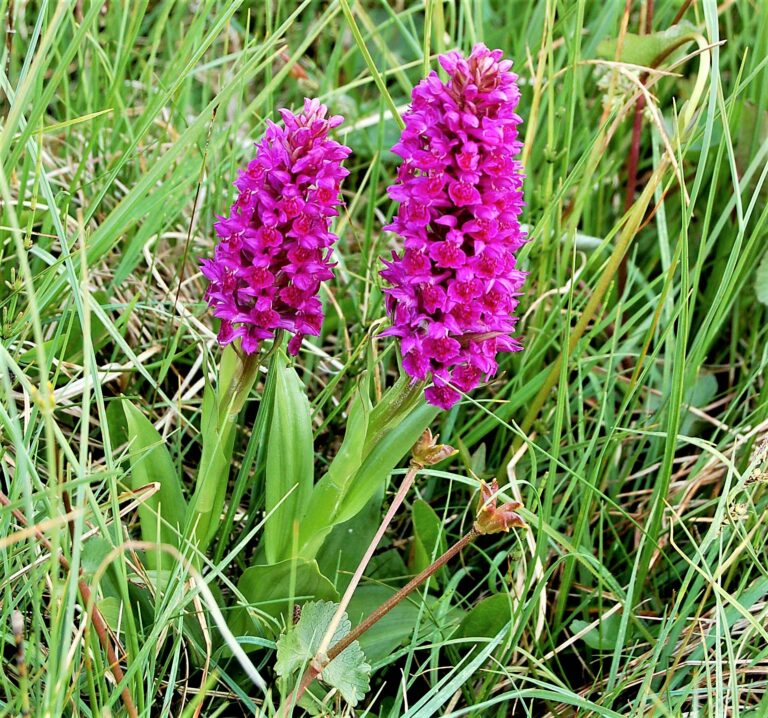
Northern Marsh Orchid
One of the North East’s most recognisable orchids, this species boasts vivid purple flowers and dark spots on the lop of each bloom that do not form a loop as seen in other species.
Found in a range of habitats, from meadows and dune slacks to urban environments, this species can be encountered right across the region come May.

Southern Marsh Orchid
Widely distributed in the Southern portion of the UK but rare in the North East, this species is restricted to just a few sites in South Northumberland and County Durham.
The Southern Marsh Orchid has unmarked leaves and the colour of the flowers varies substantially from pale to dark pink, not vivid purple.

Greater Butterfly Orchid
A distinctive plant of meadows and other grassland sites, the Greater Butterfly Orchid sports white flowers not too dissimilar to the spreading wings of a butterfly.
The flowers of this species grow quite tall and it boasts broad, shiny and unmarked leaves at the base of the stem. In our region, it is found predominately in upland areas of Northumberland and Durham.
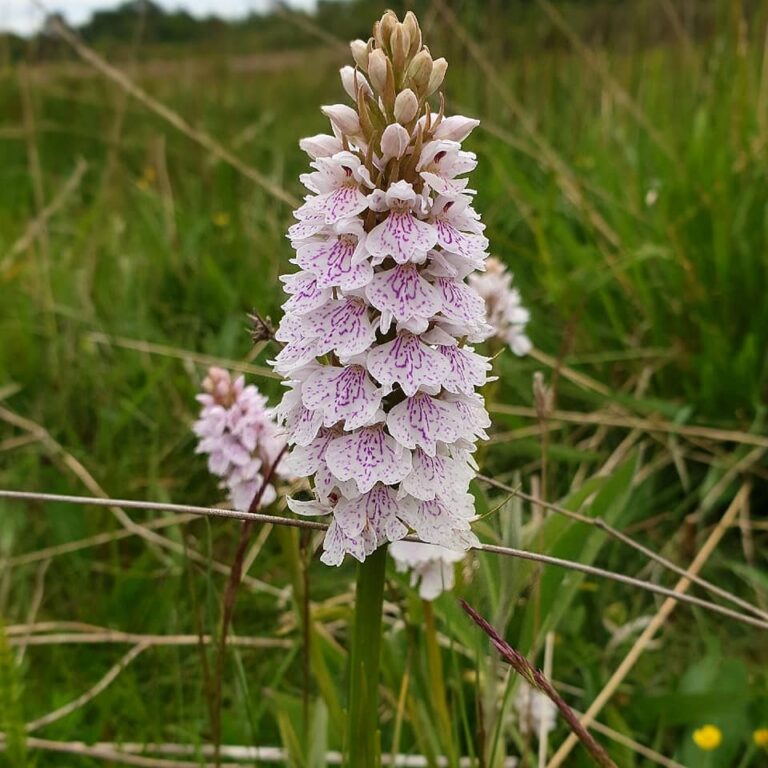
Heath Spotted Orchid
An abundant plant that is often mistaken for Common Spotted Orchid, this species has wider leaves with larger markings and flowers with a more deeply lobed lip. The flowers are also often white.
This species can be found in a range of habitats in the North East, including bogs and acid grassland often far from the uplands.

Common Twayblade
A common and distinctive orchid found in a wide range of habitats, the Common Twayblade sports inconspicuous green flowers and egg-shaped green leaves.
This species is far more likely to be encountered in the North East than its cousin, the Lesser twayblade, which is smaller and has smaller leaves.

Frog Orchid
Small, green and easily overlooked, the flowers of Frog Orchid can be difficult to see among grasses come Summer. The flowers are are a combination of green and brown and looked slightly like frogs when you get up close.
Rare North of the Tyne, this species is far more abundant in areas of County Durham where it can be seen in a range of limestone habitats.
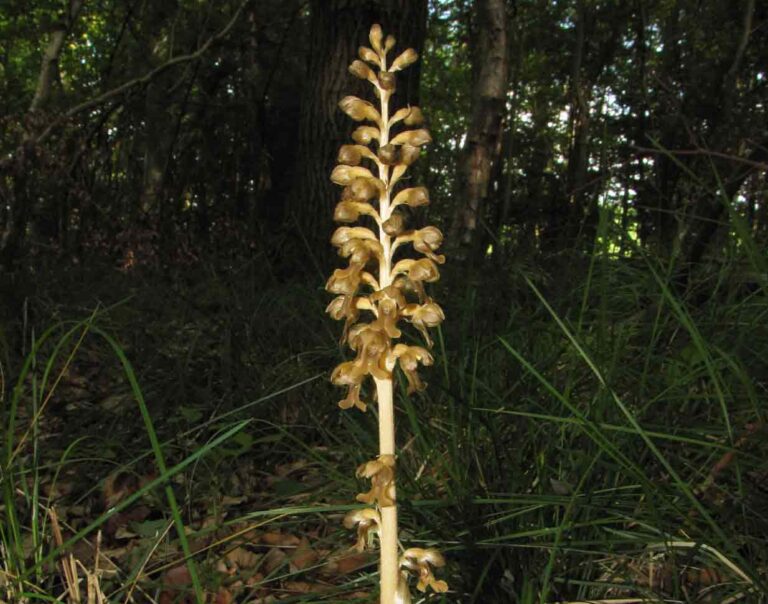
Bird's-nest Orchid
Its name derived from its ‘nest-like’ tangle of roots, the Bird’s-nest Orchid grows as a parasite from the roots of trees and as such, is most often encountered in woodland.
Brownish, distinctive and with hooded flowers, this is a rare orchid but could be encountered in wooded sites right across the North East.

Lesser Butterfly Orchid
A scarce beauty found at only a handful of sites in the North East, the Lesser Butterfly Orchid boasts white flowers with a slightly greenish tinge.
Most often encountered within grassland, it is separated from the Greater Butterfly Orchid by the the appearance of its two pollen sacs which are vertical, as opposeed to ‘V’ shaped in Greater Butterfly Orchid.
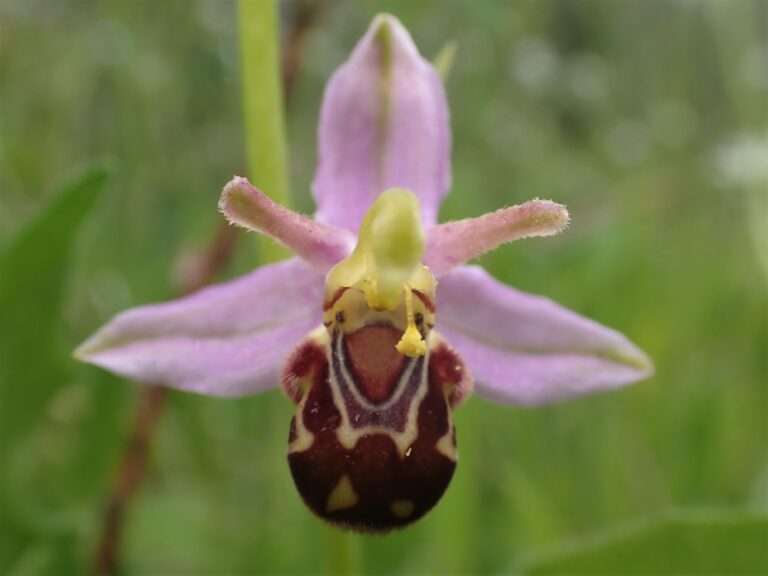
Bee Orchid
Colourful, distinctive and beautiful, the iconic Bee Orchid cannot be confused with any other orchid species found in the North East.
Look for their distinctive flower spikes on dry, chalk and limestone grasslands between June and July.

Marsh Helleborine
A particularly beautiful orchid with red stems and white-pink flowers, this species grows in dune slacks and wet grassland. Where it is present, hundreds can often be seen blooming in drifts alongside other native wildflowers.
This is a rare species in the North East and Lindisfarne is one of the best places to spot this distinctive plant come Summer.

Dark Red Helleborine
One of our most striking orchids, this species sports deep-red flowers displayed in spikes of up to forty individual blooms.
A species confined entirely to limestone habitats, it is rare in our region but can be observed in abundance at a few sites in County Durham.
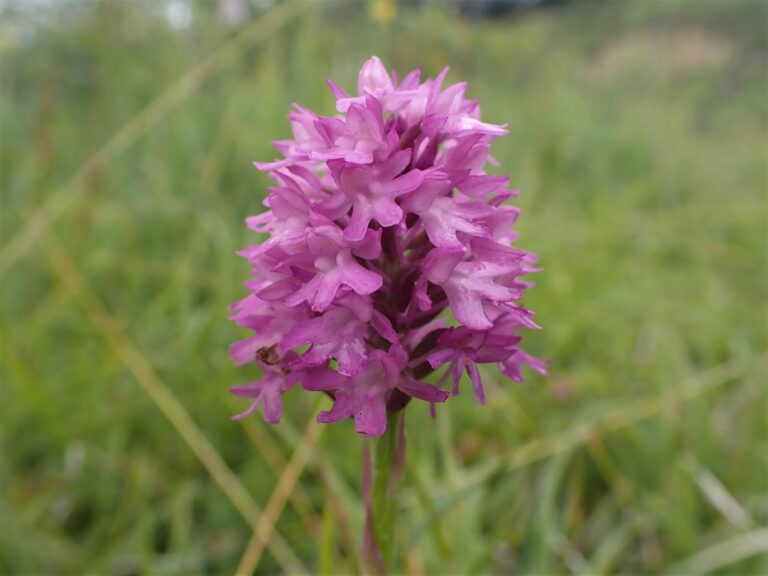
Pyramidal Orchid
Living up to its name, the purple flowers of this eye-catching species form densely packed pyramids atop green stems.
An orchid which favours coastal habitats, as well as quarries and mineral-rich grassland, it is widely distributed across the North East, from North Northumberland to Teesside.

Lindisfarne Helleborine
The holy grail of North East orchids discovered on Lindisfarne in 1958, this species is endemic to the island from which it takes its name.
Flowering between late-June and mid-July, this orchid boasts green flowers with a chocolate-brown interior and is sure to delight orchid observers should they encounter it.

Dune Helleborine
Similar in appearance to the Lindisfarne Helleborine but growing at inland sites along the River Tyne, this is another rare species in our region.
Dune Helleborines sport broad, yellow-green leaves growing in pairs along the stem and flowers with a whiteish lip and green tip.
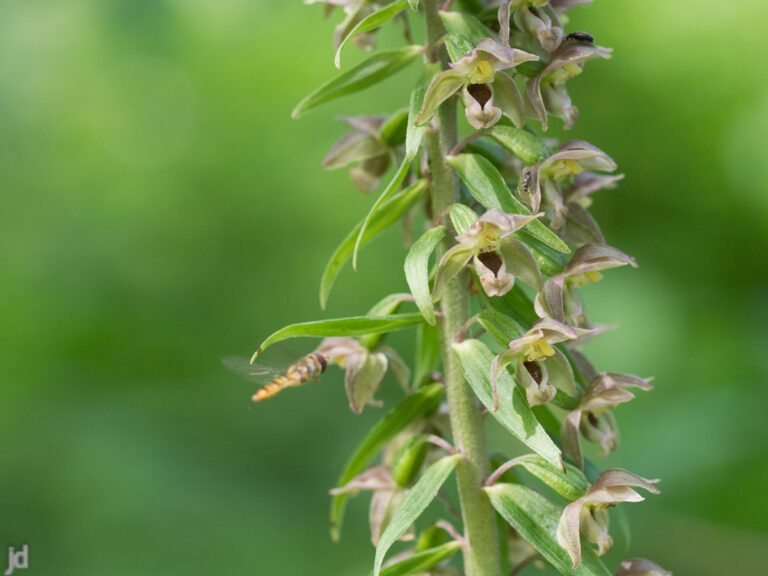
Broad-leaved Helleborine
The helleborine you are most likely to encounter on your walks across the North East, this widespread orchid grows in woodland, hedgerows and sometimes, in grassland habitats.
This orchid has broad, ribbed and flat leaves and drooping flower spikes holding at times hundreds of blooms.